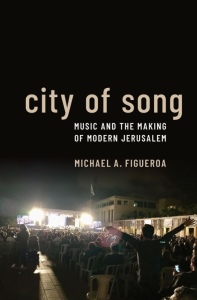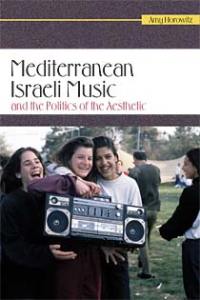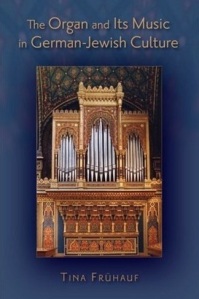You are currently browsing the tag archive for the ‘Israel’ tag.
City of Song: Music and the Making of Modern Jerusalem. Michael A. Figueroa. Oxford: Oxford University Press. 2022.
Reviewed by Tanya Sermer

Michael A. Figueroa’s captivating City of Song: Music and the Making of Modern Jerusalem is a book about Jerusalems—high/low, celestial/terrestrial, metaphorical/material—and how musical representations of the city have produced a multiplicity of political imaginaries about those Jerusalems in modernity. Combining an impressive array of interdisciplinary theory, historical and archival study, ethnographic fieldwork, and close listening to songs in Hebrew about the city, Figueroa creates a sophisticated framework for understanding how music and poetry (from the Psalms through Israeli popular song of the 1970s) have been used to create subjective and changing “spatial knowledge” about Jerusalem among Zionist Jews and Israelis over the course of the twentieth century. Presenting a remarkably nuanced exploration of the contested meanings inherent in cultural output regarding the city, Figueroa is deliberate in his relational approach to the people and spaces in his study; discussions of Jerusalem throughout the book consider the perspectives and concerns of Palestinian Arabs, Armenians, or ethnic and religious divisions within the Jewish and Israeli populations. Figueroa’s commitment to a relational approach—a growing body of such scholarship in musical studies of Israel and Palestine that aims to break down the mutual exclusion of those two national narratives as well as the conventional dichotomies within them—offers the reader a rich picture of the social and political forces at play and the greater implications of the territorial imaginaries that underpin the songs Figueroa examines.
Read the rest of this entry »Playing Across a Divide: Israeli-Palestinian Musical Encounters. Benjamin Brinner. New York: Oxford University Press, 2009. 360 pp. ISBN 978-0-1953-9594-5
Some time in the late 1980s, at the height of the first Palestinian intifada, Israeli poet/lyricist/author/publicist Jonathan Geffen devoted one of his regular newspaper columns to Israeli music. Geffen, renowned as an eloquent cynic in his often dour critique of Israeli society, began his piece by articulating the general sense of shock and depression that had taken over much of Israeli cultural and intellectual life in that period, particularly among those identified with the country’s left-of-center political camp, for which Geffen was a spokesperson. Depressing though the situation was, Geffen wrote, there was one bright spot: In a country so small and crisis-ridden, the extent and range of musical creativity was to him a small piece of veritable redemption. Read the rest of this entry »
Mediterranean Israeli Music and the Politics of the Aesthetic. Amy Horowitz. Detroit: Wayne State University Press, 2010. xvii+251 pp. (+ 19 songs on CD). ISBN 978-0-8143-3465-2
Musiqa mizrahit, aka Israeli Mediterranean Music, is a category of popular music mostly known for its strong Middle Eastern and Greek tinges. It has been at the center of Israeli public discourse on popular music since the late 1970s. By 2010, the leading theme of this discourse is the “triumph” of the genre in the field of Israeli popular music. With prominent performers such as Sarit Hadad, Eyal Golan, Kobi Peretz, Moshe Peretz, Shlomi Shabat, Lior Narkis and others filling up the largest music venues in Israel, leading the sale charts and ruling the radio airwaves, Israeli Mediterranean Music is by 2010 the “mainstream” of Israeli popular music. Throughout its history, speakers for Israeli Mediterranean Music have insisted, against their marginalization, that this genre is the “true” Israeli authentic popular music, the one that should be at center stage of Israeli culture. Given the genre’s success in the 1990s and the 2000s, Edwin Seroussi and myself concluded some years ago that “the nationalist impetus that underlined musiqa mizrahit for decades has achieved its own self-declared goal of both bringing musiqa mizrahit into the mainstream of Israeli popular music and of affecting the sounds of all popular music in Israel.”[1] Read the rest of this entry »
Der Zionismus in der Musik. Jascha Nemtsov. Jüdische Musik: Studien und Quellen zur jüdischen Musikkultur, vol. 6. Wiesbaden: Harrassowitz, 2009. 380 pp. ISBN 978-3-4470-5734-9
“Zionism was known as one of the few realized utopias in the twentieth century, probably the only one that in addition to addressing social concerns also had a distinct humanistic character,” writes Jascha Nemtsov in the epilogue to his monograph on the role of music in the Zionist movement in the first half of the twentieth century (349)[1]. A somewhat nostalgic tone permeates this truly amazing volume, which relates many facets of Jewish musical life to Zionism, commonly defined as a late nineteenth-century political movement dedicated to establishing a Jewish homeland. Nemtsov, who is well aware of the negative connotations of nationalism in the twentieth century (he quotes Ernest Gellner’s view of nationalism as “diabolical and lethal”), pleads for exception for Zionism. Probably even more forcefully than other nationalist movements in the twentieth century, he claims, Zionism put an emphasis on culture and thus brought about a Jewish cultural renaissance around the globe. It is these cultural, and specifically musical, ramifications of Zionism that interest Nemtsov, who presents Zionism as the unifying force that enabled a heterogeneous Jewish Diaspora culture to have a common focus. Nemtsov’s nostalgia derives from his sense that Zionism’s idealistic goal fractured as Zionism developed from an energetic political and cultural movement in the Diaspora to ossified official policy in modern Israel. According to Nemtsov, there were also other factors that made Zionism anachronistic by the second half of the twentieth century: the almost total annihilation of European Jewry, which served as the cradle of Zionistic ideals; the repression of Jewish culture in the Soviet Union, which was the center of Jewish life before the Revolution; a new Israeli culture that consciously tried to eliminate characteristics associated with the Diaspora; and a postmodern sensibility in the arts that fits uneasily with the optimistic ideals of Zionism. What Nemtsov does not mention as a contributing factor to the demise of the Zionist idea is the conflict between radically different visions of Zionism in present-day Israel, manifested in a less nostalgic account of Israel’s Zionist past by “new historians” such as Tom Segev.
The Organ and Its Music in German-Jewish Culture. Tina Frühauf. New York: Oxford University Press, 2009. 296 pp. ISBN 978-0-1953-3706-8
Recent studies in Jewish art music have contributed significantly to an emerging continuum of Jewish identities in Western music, from the St. Petersburg Society for Jewish Folk Music, to Ernest Bloch’s “Jewish cycle,” to Leonard Bernstein’s symphonies[1]. Dealing with the migration of liturgical and paraliturgical Jewish musics into Western art music, these studies try to assimilate “Jewish music” into the expanding canon of Western music while struggling with both the historical lagging of Jewish musical literacy and the pitfalls of essentialism. In the process, scholars find themselves harassed by the many sonic stereotypes that connote with “Jewish music” and are in urgent need of dispelling. Tina Frühauf’s book highlights such a stereotype, but in an inversion: the introduction of the organ, regarded emblematically as Christian (3), into the synagogue and the way it stimulated liturgical, paraliturgical, and art music—even as it “remained an oddity for Jews and non-Jews alike” (viii).





